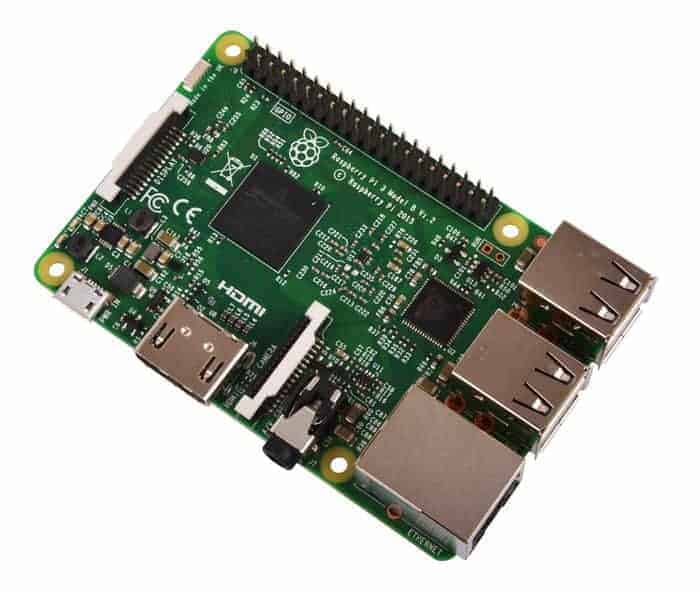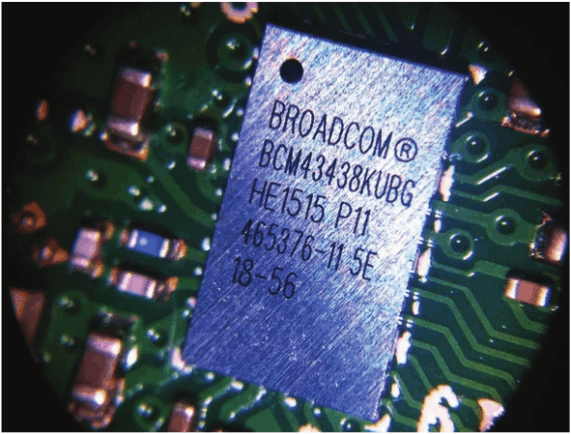When the first Raspberry Pi board was introduced it changed the understanding of small computers by bringing Linux closer to us. With great support, low board prices, and the vast community, it stayed on top next to Arduino for four years. Of course, in to keep that success, updates in hardware and software are mandatory. We know how fast things change computer industry, so time to time, Raspberry Pi foundation kept upgrading Pi boards From first to second and now the newest third generation – Raspberry Pi 3.

At first glance, you may see that Raspberry Pi 3 board is practically identical to version 2. component layout is the same, including all peripherals. So all enclosures that worked with Pi2 should fit fine for Pi3 boards. But not the most obvious things that make it stand out.
Specifications of Raspberry Pi 3
- SoC: Broadcom BCM2837
- CPU: 64-bit quad-core ARM Cortex-A53
- GPU: Broadcom VideoCore IV
- RAM: 1GB LPDDR2 (900 MHz)
- Networking: 10/100 Ethernet, 2.4GHz 802.11n wireless
- Bluetooth: Bluetooth 4.1 Classic, Bluetooth Low Energy
- Storage: microSD
- GPIO: 40-pin header, populated
- Ports: HDMI, 3.5mm analog audio-video jack, 4× USB 2.0, Ethernet, Camera Serial Interface (CSI), Display Serial Interface (DSI)
The SoC
First, the considerable upgrade is processor – in fact, it comes with new Broadcom BCM2837 system on chip, which features four 64-bit ARM Cortex-A53 cores running at 1.2GHz having 32kB Level1 and 512kB Level2 cache. It also has VideoCore IV graphics processor, which now runs at 400MHz (3D core at 300MHz).
As always, Soc it is sandwiched with a bit faster 1GB LPDDR2 memory module. Multi-core architecture brings Raspberry Pi 3 to a new level of processing power. Initial benchmarks indicate up to 10 times performance increase compared to the first model and up to two times compared to Pi 2 when running multi-threaded operations. So we should expect significant gains when running multithreaded programs. Another pronounced performance increase is in GPIO speed. We like using Python for GPIO programming, and we know that IO speed wasn’t great. With Pi 3, you should feel a significant increase – up to twice compared to Pi 2.
WiFi and Bluetooth
The speed increase is always logical with a newer version, so nothing unexpected here. But the real thing that lifts Raspberry Pi to a new level is built-in WiFi and Bluetooth support. They have included small Broadcom BCM43438 chip, which handles all wireless radio. It supports 2.4GHz 802.11n wireless LAN, Bluetooth Low Energy, and Bluetooth 4.1 Classic radio support. In order to keep all costs down, they soldered naked silicon to the board. Let’s hope that direct light won’t disrupt its regular operation.

The fun thing is that chip also comes with FM radio receiver, but they decided to disconnect this feature. It is hard to tell why, but this could be another exciting feature.
The wireless chip also needed an antenna, so they included miniature antenna in place of the previously used status LED, which has been moved next to microSD slot.

So no need for an additional external antenna to be used. IT expected range should be as good as any smartphone.
The rest is the same as in Pi 2
And this is practically all news about Raspberry Pi 3. The 4x USB 2.0 stays same as in Pi 2, including other things like 10/100 Ethernet, GPIO, HDMI, 3.5mm analog audio-video jack, Camera Serial Interface (CSI), and Display Serial Interface (DSI).
There is a more powerful processor and wireless radio devices included; they recommend using a more powerful micro USB power supply. At least capable of driving 2.5A. So you should be careful when powering it from a computer USB port. So get a decent power supply adapter, or at least use a powered USB hub.
This is great, but…
No matter how great Raspberry Pi 3 sounds, there are still lots of to improve and update. From community reaction, we can tell a few most expected things in upcoming boards that could also be implemented on version 3:
- USB 3.0 – USB 2.0 will be a thing of the past. With greater power, we also need a faster USB transfer speed.
- PoE – Makes this sound too much. Powering Raspberry Pi over Ethernet – this would be nice touch giving even more flexibility to deploy internet-connected devices using a single cable.
- Gbit ethernet – again 10/100 is also a limiting thing for many apps.
- SATA port – We all understand why this sounds attractive, aren’t we?
- More RAM – 2 GB of ram wouldn’t hurt at all. Processing power is getting severe, so this might also be a bottleneck in some situations.
So there are still many expectations, and hopefully, they will be included gradually while trying to keep the same price level and software compatibility. Besides this, Raspberry Pi 3 is an excellent upgrade with its WiFi native support and greater processing power.





